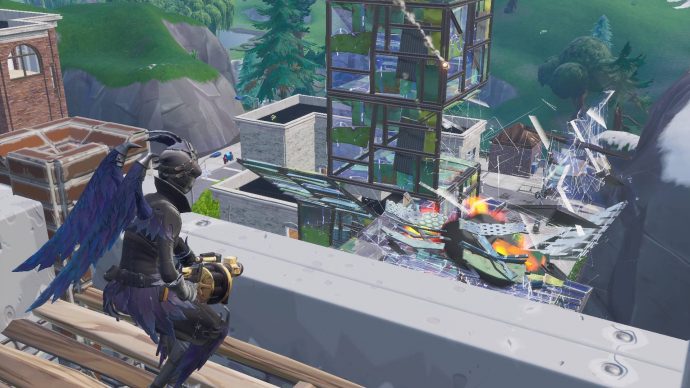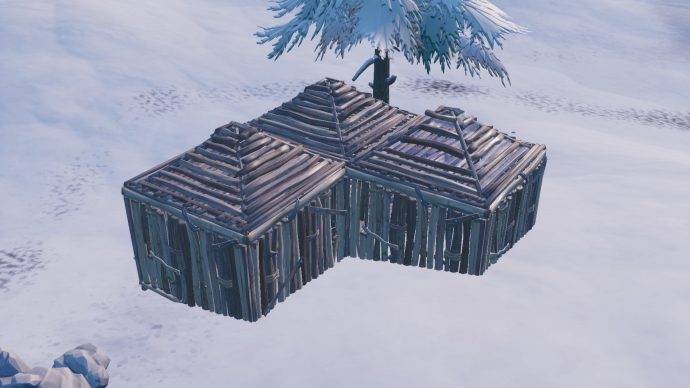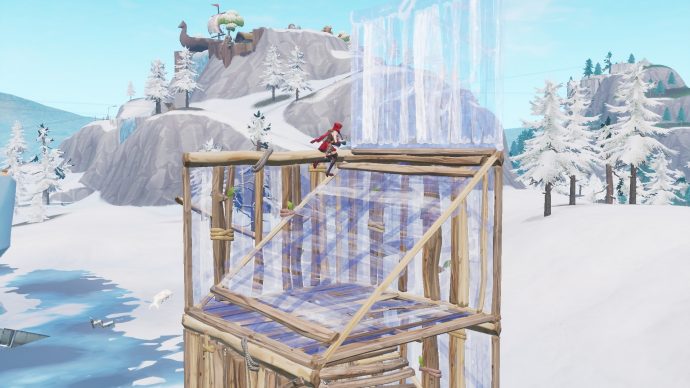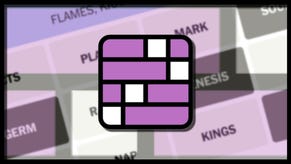Fortnite building and editing guide (V8.00) - Fortnite building tips and editing tips, material stats, 1x1s, 90s
Learn to build like [Insert Streamer Here]
Fortnite's building and editing of structures is what sets it apart from any other Battle Royale, and they're as imperative to learn and master as the game's myriad weapons and gunplay mechanics. Even the best reflexes and aim in the world won't save you against a seasoned Fortnite builder.
Our Fortnite building and editing guide is here to get newer players started building, and to introduce more advanced players to some little-known tips and tricks employed by Fortnite professionals and streamers. You'll find detailed information on material types, the different structures and editing possibilities of each, and some words on the most commonly used and practiced builds in Fortnite, such as the 1x1 and the 90.
For a more general overview on Fortnite's Battle Royale mode and how to get started playing, you may want to take a look at our Fortnite guide before heading back here. If you're a confident builder but want to brush up on your gunplay, then head over to our Fortnite weapons guide. Or if you're more interested in staying on top of all the weekly challenges, swing by our Fortnite week 6 challenges page.
Fortnite building guide - building and editing tips
| Fortnite material types | Structure types and possible edits |
| Fortnite building principles | Material usage and recommended amounts |
| How to edit structures | Essential Fortnite builds to practice |
Fortnite materials - material types and stats
Fortnite's structures are created out of three different materials, Wood, Stone, and Metal, which you can cycle between with right-click while in build mode. All three of these materials are used to construct exactly the same structures - walls, ramps, floors, and roofs. The material you use determines the starting and maximum health of the structures you create. Each individual structure you place costs 10 of your selected material, and in a standard game you can hold a maximum of 999 of each material type.
All structures spawn with less health than their maximum amount. Once placed, they'll quickly gain health until they reach their maximum. Below you can see a table of the different material and structure types, along with their stats.
| Structure/Material Type | Starting Health | Max Health | Health Gain Rate | Time To Reach Max Health |
|---|---|---|---|---|
| Wood Wall | 90 (60%) | 150 | 8 per tick (16 per second) | 4 seconds |
| Wood Ramp/Floor/Roof | 84 (60%) | 140 | 8 per tick (16 per second) | 3.5 seconds |
| Stone Wall | 99 (33%) | 300 | 9 per tick (18 per second) | 11.5 seconds |
| Stone Ramp/Floor/Roof | 93 (33%) | 280 | 8 per tick (16 per second) | 12 seconds |
| Metal Wall | 110 (22%) | 500 | 8 per tick (16 per second) | 24.5 seconds |
| Metal Ramp/Floor/Roof | 101 (22%) | 460 | 8 per tick (16 per second) | 22.5 seconds |
Wood is by far the weakest material to build with, though it reaches its maximum health more quickly. Stone is significantly hardier than wood, and metal is the strongest, though it takes far longer to reach its maximum health. This is all balanced out by the fact that wood is far easier to obtain in bulk than the other resources by chopping down trees. Stone and metal are harder to obtain, though certain areas, such as Dusty Divot and Tracks, are excellent sources of metal.
In general, wood should be used for building while out of danger, while metal is your friend when it comes to build battles and late-game 1x1 structures.
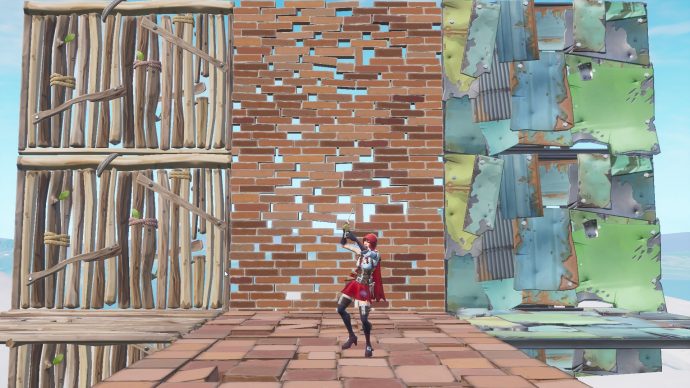
Fortnite building tips
Below I've outlined just a few key principles when it comes to building of any kind in Fortnite. This may be common knowledge to many, but it won't be to others, so take a look and make sure your foundation is solid.
1) Set all your building-related keybinds to easily accessible keys
Assign hotkeys to each of your individual structure types: walls, ramps, floors, and roofs. Make sure you can access them in a hurry; the keys should either be near your movement keys ("WASD") or on your mouse. Do the same with your Edit key, your Edit Reset key, and your Rotate Structure key; all of these you'll need at a moment's notice during build battles.
2) Destroying the base of a build will destroy the entire build
In order to exist, a structure must be anchored to the map in some way. You can't build a ramp floating in the air, for instance. Something has to keep the structure attached to the terrain. And if the connecting part of a build is destroyed, then it will cause a chain reaction through everything connected to it which is no longer supported, destroying the entire build. So if you're in a tall build, and someone comes along and destroys the base structures, your entire build will crumble and you'll fall to the ground and die.
3) Make sure Turbo Building is enabled
The Turbo Building option can be found in the Fortnite settings menu, under the Game tab - and you should most certainly have it enabled if you don't already. Turbo building enables you to hold down left-click while in build mode, and continually place builds wherever you aim. Using this setting allows you to create four walls around yourself in one swift motion, and create more complex builds with stunning quickness.

Fortnite editing tips
First thing to remember about editing is that you can only edit structures that were created by yourself or a teammate. To edit one such structure, you must be close to the structure, and aim at it until you see the word "Edit" overlaid atop the structure. When you hit the edit key, you'll be brought into the edit overlay for that structure, which divides the structure into several blue panels.
These blue panels open up a colossal range of possibilities. By dragging your cursor along these panels, you can manipulate the structure into one of many pre-ordained shapes, as you'll see below. If you're editing a ramp or any other structure where its orientation matters, you can also use the edit overlay to quickly rotate your builds.
Once you've completed your edit, let go of left-click and hit the edit key again to confirm the change. If you want to reset your structure to its default shape, you can hit the edit key again, then right-click to reset the build; then hit edit once more to confirm the change.
Pre-Editing (and why it's awful)
You can even edit structures before you've placed them - though this is a feature that many players detest, because it's often mistakenly activated in the heat of battle. To "pre-edit", as it is called, you must be in build mode, and hit the edit key before you have placed the structure, whereupon you will be shown the edit overlay to make any changes you wish.
Unfortunately, the game will remember any pre-edits you have made, which means if you pre-edit your wall piece to have windows and a door, then every future wall you place will have windows and a door until you reset the structure. There's basically never any reason to pre-edit a structure intentionally, so steer clear if at all possible.
Fortnite structure types and editing guide
If you're new to editing and want to take a look at all the available shapes you can create, then look no further than this wonderful PDF guide by the player "Abyssalheaven", which lists every possible edit you can make with each of the four types of structure.
The most useful edits you are likely to make are the following:
- Triangular edits on walls
- Half edits on ramps
- Corner edits on floors
- Window edits on walls
These are the edits you'll want to practice as much as possible. The other edits are less frequently used in most games, though many have their situational uses. Learn from the plays you see other players make, practice, and experiment in Creative Mode until you're familiar with the main edit types you can make throughout a match.

Material usage and recommended amounts
As mentioned above, it's best to conserve your metal and stone as much as possible for actual fights, and use wood for other non-essential builds such as gaining height to use a Launch Pad, or scaling a cliff or building. Metal is very valuable and often in short supply, so only use it when you need to defend yourself well.
It's hard to gauge how many materials you'll need to see you through to the end of the game, and if you're still learning how to build in Fortnite, chances are you'll use more materials than an experienced player would use to accomplish the same goals. As a general guideline, try to get 100 of any material as soon as possible to allow you to defend yourself in early fights; then, for mid- and late-game build fights, you should expect to burn through perhaps 300-400 materials. Against tough, experienced players, it's more like 700 materials.
As you can see, materials can disappear surprisingly quickly across the course of a game, so it's always worth swinging your pickaxe at nearby trees, fences and furniture to accrue as much as possible as you progress towards the final circles.
1x1s, 90s, Ramps, and other Essential Fortnite builds
Below are a handful of the main build combinations you'll be needing to see you through most fights in Fortnite. These are the builds that you should spend lots of time practicing in Playground Mode if you want to become a proficient builder.
Fortnite 1x1 (Easy)
A Fortnite builder's bread and butter, the 1x1 (one-by-one) is comprised of four walls, one on each side, with a ramp in the centre of the build (and optionally a floor as well, to add some more structural integrity). The 1x1 is seen most often in the late-game, where the few remaining players will often head to the next circle, build a 1x1, then sit at the top and assess their surroundings.
The 1x1 is quick and easy to create, and you protect yourself fairly well even as you're building, making it an essential defensive structure. Of course, as with all other builds, you should take care to never build too high, because the base can be destroyed easily with a couple of grenades or some AR or SMG spam.
Fortnite Double-Ramp (Intermediate)
the most common way to begin a build battle is to ramp upwards towards your opponent; but a single ramp can be shot down very easily. But with a Double-Ramp, your opponent must destroy two structures instead of just one to bring the whole thing toppling down, giving you more time to get into position.
Double-Ramping is a fairly easy next step up from single ramps. Just remember to run straight down the centre between your two ramps, and turbo-build left and right as you go. But only build as high as you need to go. Just because you're double-ramping doesn't mean you're immune to being knocked down.
Fortnite Reinforced Ramp (Difficult)
This is a build which burns through an awful lot of your materials in a very short space of time, so just as important as learning how to build Reinforced Ramps is learning when not to build them. That said, the Reinforced Ramp is an excellent way of protecting your structure while you ramp up towards the enemy. Essentially, as you're turbo-ramping up, you switch to walls and floors and build them on the outside of your ramp to create extra layers of structure that must be broken before your build comes toppling down. Thrice the resource cost, but thrice the protection.
If you're low on materials, just place walls or ramps, instead of both. If you don't care at all about how many materials you use, then you can even combine full Reinforced Ramps with Double-Ramps. Some maniacs have even learnt how to create ghastly, impractical ramps that can take multiple explosions without being destroyed.
Fortnite Turtle (Difficult)
When it comes to Turtling,the build itself is not that difficult at all. It's extremely simple, in fact. You just create a single 1x1 on the ground, and place a floor and roof above it. And that's it. It's a quick and compact defensive structure that can be build on the ground or in the midst of a build battle, and should be employed in moments where you need to protect yourself from enemy fire. The beauty of the Turtle is that it tessellates very effectively; you can build multiple Turtles next to one another, and edit through to them as and when you need to. The defensive power of the Turtle build is such that you'll frequently see the final circles of pro tournament matches absolutely littered with them.
But you'll need to learn to repair your structures very quickly and edit between them in a flash if you want to take full advantage of the build's strength. An enemy on the other side of your build will attempt to break down your walls and either kill you there and then, or place their own wall to replace yours, which they can then edit to open up a window and shoot you without warning.
Fortnite 90s (Very Difficult)
The 90 is given its title because it involves a great many 90 degree turns in a short space of time. "Doing 90s" is the quickest way to gain height. Essentially a 90 involves creating a ramp, building a wall in front of you, then jumping and quickly turning 90 degrees to build another ramp below you and a wall in front, then jumping and turning 90 degrees again, and so on. If you want you can think of it as a stripped-back 1x1 which sacrifices structural integrity for speed.
When employed correctly, players can ascend at blinding speeds without even having to take their finger off the "W" key. 90s are a staple build when it comes to competitive Fortnite building, and although it takes a great deal of practice to use effectively and commit to muscle memory, if you master the 90 then you'll pretty much always beat your opponent to the high ground.
Fortnite building and editing tips
Finally, let's finish up with some general tips and tricks to help you with building and editing in Fortnite. Follow these rules, and you'll be out-building the entire lobby in no time.
- Consider binding your Edit Reset key to your mouse wheel. This is admittedly a much more advanced trick that many won't have heard about, but for those looking to really impress with their editing skills, binding Edit Reset to your mouse wheel allows you to combine edits and resets with incredible speed. Take a look at this video by pro player and streamer SypherPK to see it in action.
- Use roofs! Seriously! Use them! A hallmark of someone who knows what they're doing is that they incorporate roofs into their builds at a moment's notice. Roofs not only provide excellent protection from above and below, but they are very effective when it comes to boxing in an enemy and killing them quickly with Damage Traps before they know what's hit them. The roof is such a versatile and underrated structure, and it's worth your while to practice using it and discovering all of its potential benefits for yourself.
- If you see an opportunity to destroy the foundations of an inhabited build, take it. If two players engage in a build battle, and a third player takes notice and joins the fray, the third player is more likely to win out of the three, because Fortnite is a game that rewards third partying, not least because of the ability to destroy the foundations of structures to send everything tumbling down. Take advantage of this whenever you can - if you see a tall, inhabited build with questionable structural integrity, take a few shots at it, and you might get a free kill and a tonne of loot.
- Destroy the tops of builds as well as the foundations. Now, this one's a little more technical. But it's pretty fricking cool. So when you break the base of a build, then each of the individual structures break one at a time, starting from the point of breakage and expanding outwards. This is just how the game updates its builds in real-time. But in a tall build, this gives the player at the top a bit of time to drop lower down and possibly avoid a lethal fall before their build breaks under their feet. A clever trick to counter this is to first break the foundation, and then quickly shoot out one of the structures near the top of the build. This will result in two points from which the destruction will ripple outwards - one at the bottom, and one at the top. This leaves the hapless player with next to no time to save themselves, and almost guarantees you the kill.
- Keep your eye on your opponent as you build. You should always try to keep an eye on your opponent's location relative to yours during a build battle. This is something that takes time and practice, and there aren't really any tips on how you learn this. You just have to bear it in mind as you build, and as time goes on you'll find yourself having to think less about building, which gives you more brain-power to keep track of your enemy.
- Build to accomplish your goal, not just for the sake of building. So many players think that the aim of a build battle is purely to gain the high ground, and so they continue to build up and up even though they've already won it. But of course, the real aim is to kill the other player. And if you focus too much on building higher and higher and higher, you'll miss opportunities to land the killing blow. Plus, you're almost certainly going to die if someone else comes along and destroys the base of your build. So only build as high as you need to.
- Build against cliffs and the sides of buildings for extra structural support. The more points from which your build is anchored to the terrain, the less you have to worry about players shooting your build out from under you. A great way to take advantage of this fact is to build along the side of a mountain or hill, or even a tall building such as the structures in Tilted Towers and Paradise Palms. Each time you connect to the terrain in this way, you are defending yourself from the possibility of a nasty fall.
- Practice editing not just horizontally, but vertically too. As previously mentioned, a great way to practice is by going into Playground Mode or Creative Mode and practicing your builds and edit skills. But when it comes to editing, you need to make sure you're practicing vertical edits as well as horizontal edits. Particularly when you're inside a 1x1, it's an essential skill to learn how to quickly edit through your ramps and floors to get the bottom of your structure as quickly and safely as possible.
- If you need a moment, don't be afraid to Turtle. Turtles aren't just for moments where you're in immediate danger and someone is pummelling you with a Compact SMG. If you just need a moment to heal up or decide where to go next, build a quick Turtle around you so you don't need to worry so much about being sniped while you're standing still looking in your inventory.
- Use Playground Mode and Creative Mode to practice. Building in a safe environment such as Playground Mode or Creative Mode lacks the pressure of real competitive play, but it's still necessary in order to learn how to build quickly and effectively, and commit what you have learnt to muscle memory. Once you reach this point, you no longer need to think about how something is built - you just do it.
So there we have it! Hopefully you've arrived at the end of this page with a greater understanding of the deep and complex world of building and editing in Fortnite. Check back here every so often and you might find a few more cutting edge strategies and tricks to help you reach ever-greater heights of Fortnite architectural splendour. And let us know in the comments section if there were any tips or facts that you hadn't known about before reading our guide!


